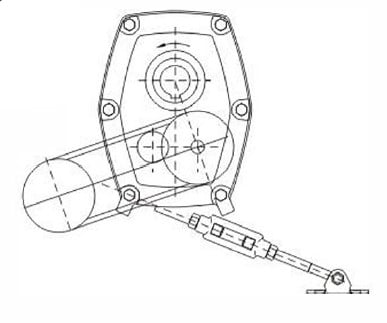Set up of sprockets
For smooth transmission and extended daily life with the roller chain, it is important to accurately set up appropriate sprockets. Use the following installation process.
one.Properly install a sprocket on a shaft, and repair it that has a critical to prevent it from rattling throughout operation. Also, area the sprocket as near as you possibly can on the bearing.
2.Adjust the shaft levelness to ?¨¤1/300 or less utilizing a level.
3.Alter the shaft parallelism[(A¡ê-B)/L]to ?¨¤1/300 or significantly less.
four.Alter the amount of driving and driven sprockets working with a linear scale. (Also adjust the idler and also the sprockets, or the tensioner and the sprockets while in the similar way.)
Retain the allowance |? inside the range specified.
Installation of roller chain
When connecting a roller chain using the sprockets, observe the following procedure. When the connecting link is not really nicely lubricated, apply enough grease.
When working with the sprocket teeth
1. Engage the chain using the sprockets in order that both ends on the chain are on among the sprockets, as proven during the following photo.
two. Insert connecting pins at the joint.
3. Fit a connecting plate, and fasten by a spring clip or cotters.
Pay added interest not to harm the tooth heads in the sprocket.
When working with tools
Cautions
1.When a connecting plate is fastened by a spring clip,apply the spring clip for the pin grooves with the connecting pins as illustrated below,  and lock it using pliers, and so on. As to the path of spring clip insertion, preserve the opening with the spring clip turned during the route opposite towards the direction of chain rotation, as illustrated below.
and lock it using pliers, and so on. As to the path of spring clip insertion, preserve the opening with the spring clip turned during the route opposite towards the direction of chain rotation, as illustrated below.
2.In circumstances where the sprocket center distance can hardly be adjusted, an odd number of hyperlinks could possibly be used. However, add one link, to use an even variety of links and do away with the sag by shifting a sprocket or putting in an idler.
When an H-connecting hyperlink is used, pins have to be driven in to the connecting plate simply because of interference. In this case, be certain that the pair of pins are kept parallel to every other when inserted into the connecting plate. Never make the holes on the connecting plate greater or make the pins thinner for a lot easier connection operate. This applies also whenever a cotter variety outer website link (CP) is utilized as an alternative to a connecting link.
